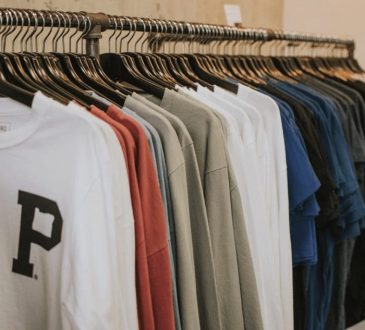
Homecoming is a well-known American tradition and is usually held in time for the first football game of the season in late September or early October. While it’s really only a tradition in the US, anyone that’s watched even a handful of American TV shows or movies will have an idea about what it is.
Every school has it’s own homecoming traditions, but the core of the event is the same – it’s an opportunity to celebrate the start of a new semester, watch a football game, and party! While most of us know about the homecoming dance, how do homecoming traditions differ through the country, and how has homecoming dress fashion changed?
Unusual Homecoming Practices
Down in Texas, there’s an unusual tradition of wearing something called a “Mum.” It started as a corsage (which is worn at proms and formal events around the world), but has since developed into huge statement pieces – so big it has to be carried!
The Homecoming Mum got its name because highschool boys would usually ask their mothers to make them (which makes it confusing given that “Mum” is more of a British term, but that’s not really the interesting point here). A Texan photographer named Nancy Newberry curated a series of intimate photographs of young Texans showing off their ornate garlands in their own homes.
This series, aptly entitled Mum has gained a lot of attention, particularly outside of Texas, where the Homecoming Mum is virtually unheard of. Nowadays, they’re designed to match the girls’ homecoming dresses.
Homecoming Dresses
Since homecoming began, girls have been focused upon the homecoming dresses they’ll wear. While the hours of research used to be spent walking around malls with their friends until they all bought their homecoming dresses, shoes, and matching and accessories, most girls now spend time browsing online.
Evolution of Homecoming Dresses
As with every mass-worn piece of clothing, homecoming dresses have evolved a lot with style over the years. Many dresses in the 1930s were made of velvet and featured a drop waist. The 1940s saw wartime fabric rations, which resulted in slim-fitting dresses. Tulle dresses in the 50s were tea-length (cutting off at the calf) and often featured ruffles.
The transitional era came in the 60s, as waistlines ascended, and hairstyles (particularly the infamous beehive) became higher. The empire skirt became popular around this time, which then shifted slightly to the flowing style of the 70s. Eyelet lace and even crochet dresses briefly made an appearance. The 80s was all about ruffles, giant bows and matching with your date. Shoulder pads and later satin dresses with spaghetti straps became popular in the 1990s. The 00s introduced a lot of floral and silky dresses.
Now, generally, everything goes! Once unfortunate Florida teen wasn’t allowed into her homecoming for wearing a black jumpsuit, but at most schools, a jumpsuit is a classy way of bringing homecoming into the 21st century. For a homecoming in 2020 or 2021, you can either choose a style to nod back to past generations (why not ask your mom what she wore?) or choose something ultra-modern, classy and influenced by celebrity style.
Needless to say, homecoming dresses have come a long way over the last few decades, and, if you keep your dress for long enough, it might just go out of fashion and come back in again! Unlike prom, homecoming is accessible to everyone, from freshmen to seniors. This means that anyone can enjoy it every single year, and that means a brand new homecoming dress every year too!



